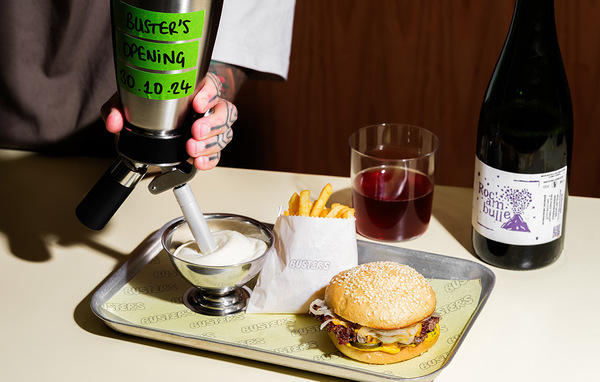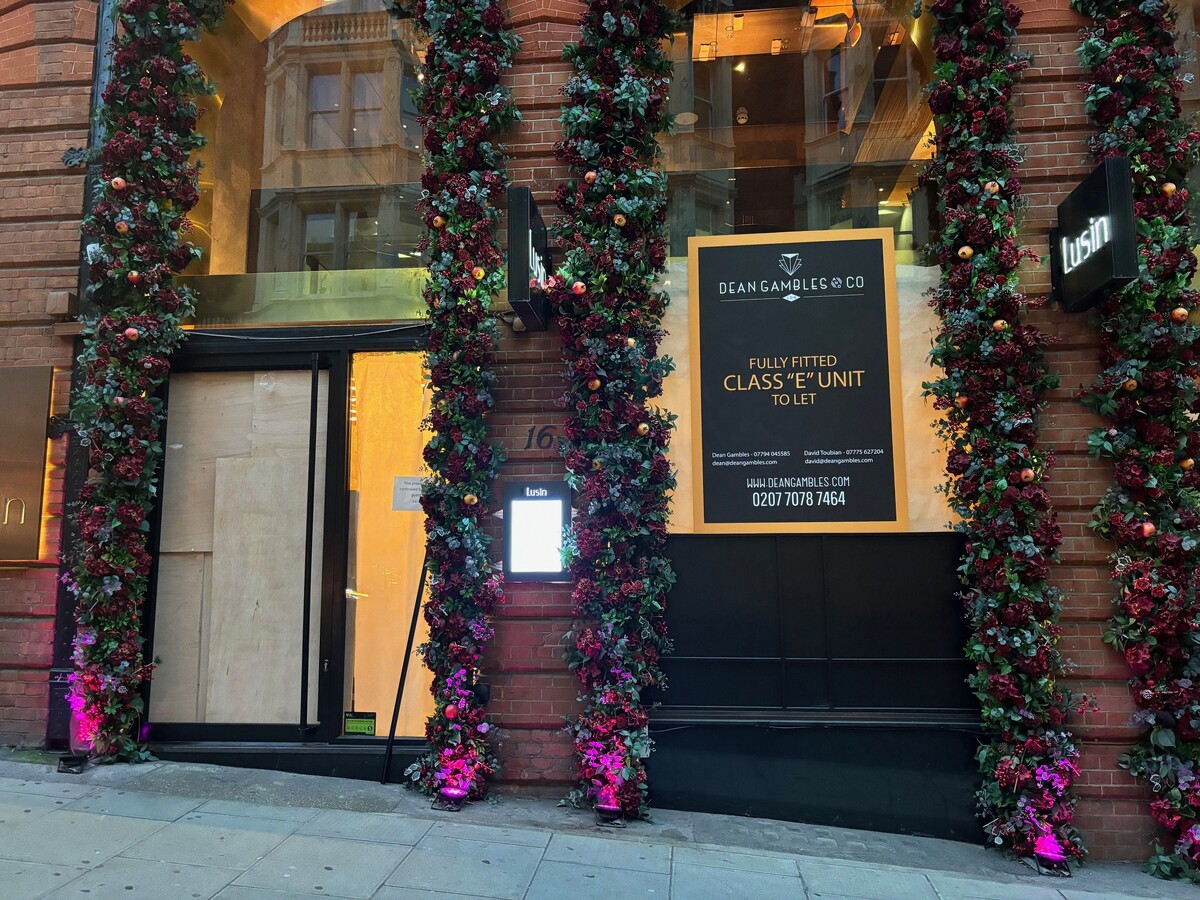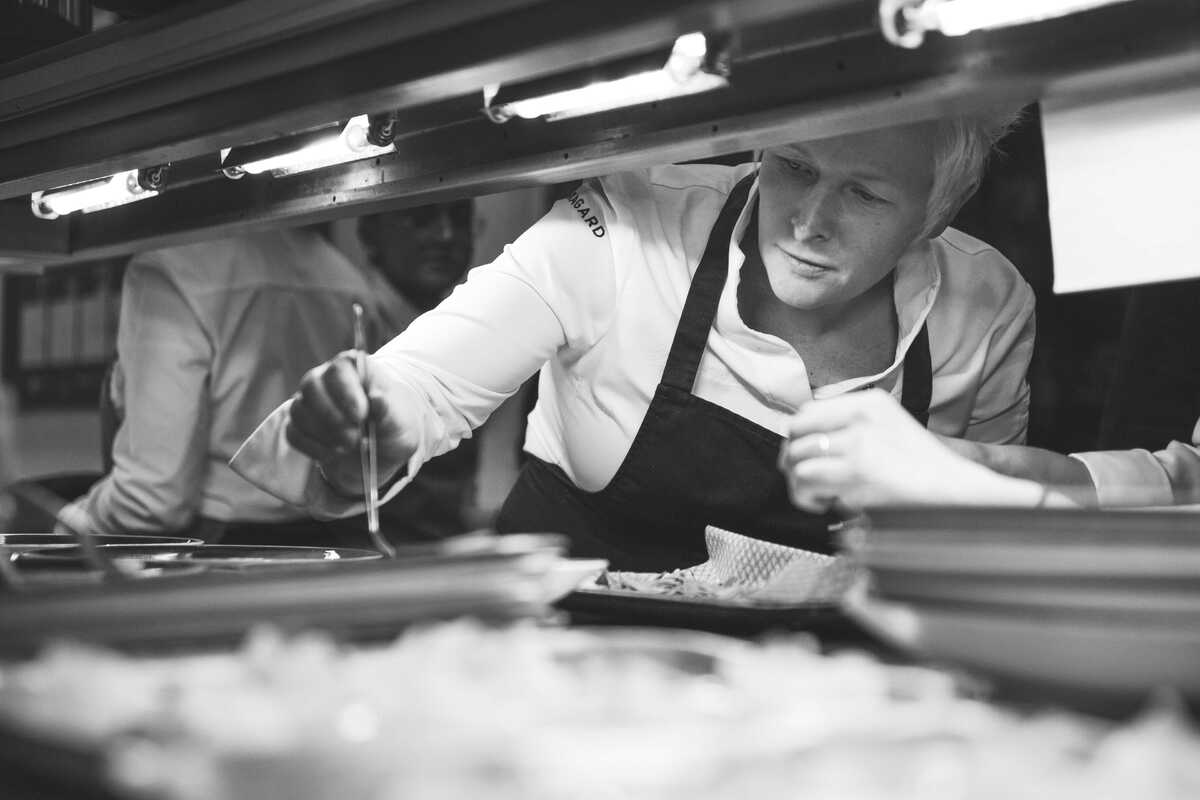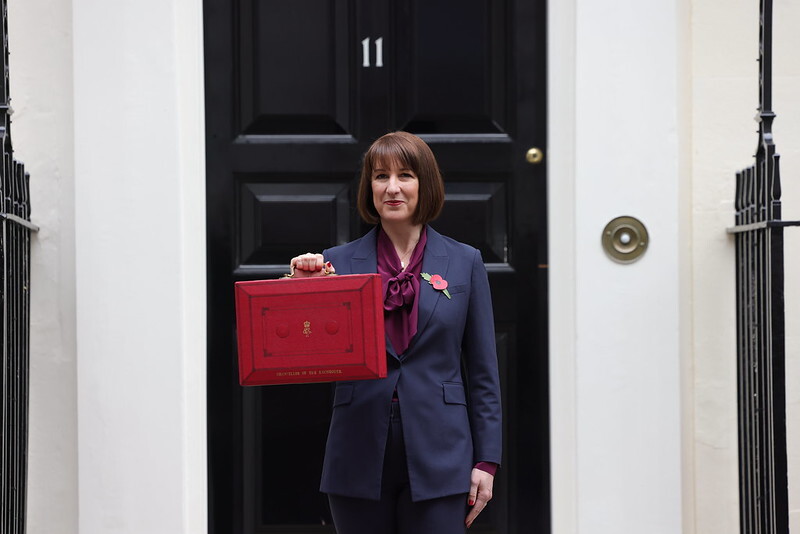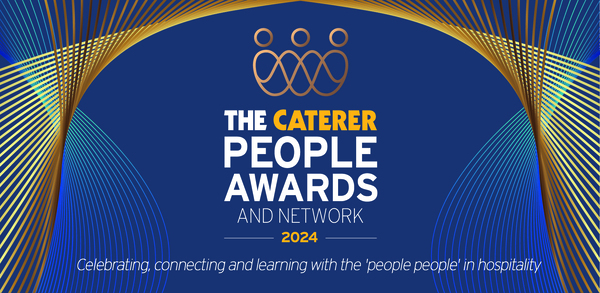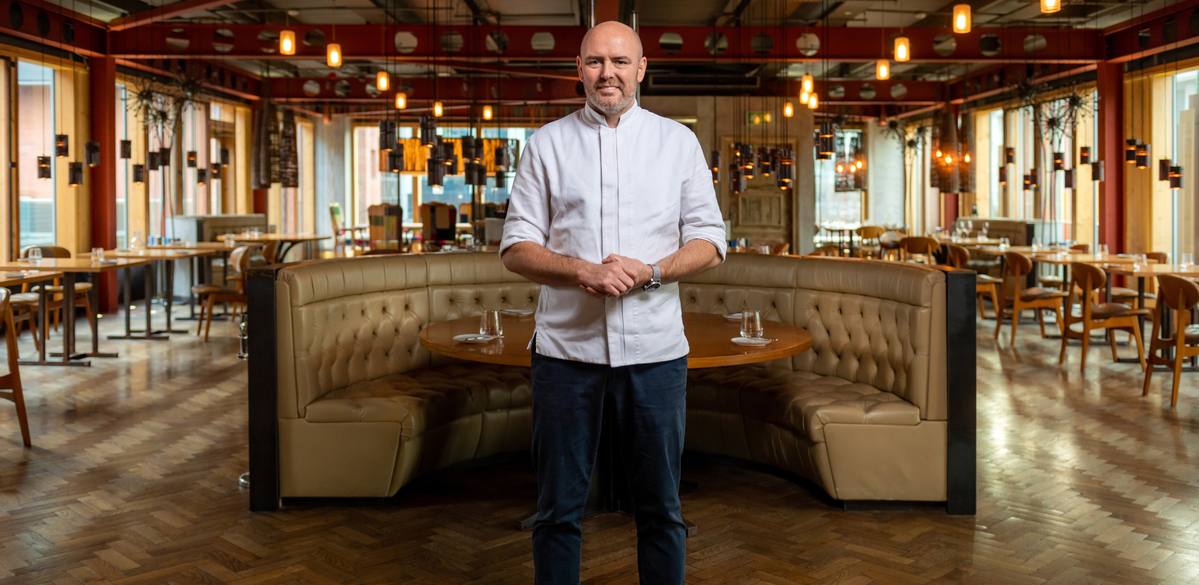Good plane cooking
Once the stuff of comedy routines, airline food is now the realm of top chefs. But, asks Catherine Quinn, has it really made any difference?
Airline food has long been a natural target for catering jokes. Bland and frequently unidentifiable, the food served on the tray meal is hardly fit for gourmets.
Or is it? Those who fly frequently may have noticed that airline food has improved considerably since the 1980s. And while technology has certainly played a part in enhancing meals, many airlines now liaise with top chefs. In fact, the standard is such that Pétrus's Marcus Wareing has even pronounced airline food superior to that found in most English pubs.
"Airline catering has changed so much in the past 10 years," says Catherine Nugent of Gate Gourmet, which supplies meals to airlines including British Airways and Qantas. "In the past, people might have expected an airline meal to be fairly bland, but now - in first class, in particular - they really can expect to be served a meal of a standard comparable with what they're used to on the ground.
"And with the improvements we've seen in technology, we can now offer meals that weren't previously possible on aircraft. For example, we can use a rapid freezing process that allows us to serve a fillet of beef that is as good as anything you'd get in a top-quality restaurant."
Competition
And with competition for passengers increasing all the time, leading airlines are trying to make their meals a reason for travellers to choose their flights. So while low-cost carriers offer snacking options which passengers pay for over and above the price of their air fare, food is a way for other airlines to mark themselves out from their competition.
"People have so many options now that, when they're choosing a flight, the meal really can make a difference for an airline," Nugent says. "With the increased importance of dietary requirements, for example, a gluten-free meal could make someone choose one airline over another. And if you're on an 11-hour flight, the food being served will make a big difference to your enjoyment of the experience. So people will choose an airline for this reason."
Closer links to the food manufacturing industry have pushed standards higher than ever and, in a bid for continued improvement, airlines are now recruiting well-known chefs. Tie-ups include Air France's liaison with Guy Martin of the Parisian Le Grand Vefour hotel, Air New Zealand's connection with Govind Armstrong of Miami restaurant Table 8, Thomsonfly's association with Aldo Zilli, and BA's recent appointment of chef Stephen Walpole through Gate Gourmet.
For airlines, the recruitment of well-known chefs has several advantages. First, the in-flight meals benefit from the expert eye of a gastronome at the top of their game. Second, there is the prestige from being associated with celebrity gourmands. And the chefs themselves are often very happy to test their talents in a new field.
"This has been the biggest challenge, because I'm trying to change people's perceptions of airline food," Walpole explains. "Up in the sky, you are restricted - you can't do foams and gels or anything Heston Blumenthal." Instead, Walpole aims for a consistent supply of high-quality, locally sourced food which is organic where possible, and healthy. "It's really easy just to bulk everything out with carbs," he says, "but that's not the route I want to go down. I'm making sure there's a good amount of protein in there, and a decent portion of fresh veg."
Fine dining?
Among industry professionals, there has been some debate about whether celebrity chefs can really be expected to match their notions of fine dining to the rigours of airline food production. After all, it's one thing to guide a team of chefs to Michelin stardom it's quite another to design a meal which must withstand being rapidly chilled and reheated in imperfect conditions.
"It's a fairly unique environment in which to serve food, and if you were to take a meal that was served in a restaurant and reproduce it for an airline it would certainly need some adjustment," explains Peter Jones, professor of airline food at the University of Surrey. "You are restricted, simply because of the cook-chill process. Fried food, for example, doesn't stand up well to these conditions - chips just come out soggy, for example. You're limited to a lot of stews and curries to help protect the meat from being chilled and reheated."
He adds: "I would imagine celebrity chefs would be used to provide key elements and concepts, rather than recipes and dishes. They can bring in ideas and are aware of fashions and trends, but I don't think putting their signature dishes on the menu would work."
So far, however, the association of chefs and airlines has been a universally successful one - perhaps because the sheer challenge of the process appeals to the driven gourmands. Walpole, for example, plays a hands-on role for Gate Gourmet, and despite coming up against daily logistical headaches, his enthusiasm remains infectious. "At the moment," he says, "I'm talking with suppliers about getting fresh strawberries served in-flight within three hours of them being picked. I would love to be able to advertise something like that to customers - to put something of a story behind what they were eating."
Challenging
Such fervour notwithstanding, those in the catering trade should be under no illusions - supplying food for in-flight conditions is about the most challenging task that can be undertaken. Caterers regularly present to airlines with menus of more than 100 choices, which must then be translated into the many thousands of meals to be loaded on to planes each day.
What's more, the recirculated air in-flight leads to a reduced perception of flavour - a reduction estimated at 30% by the University of Reading. Digestion slows down, too, and these physiological precursors to a bland meal experience are exacerbated by the fact that airlines must play to a common denominator when serving food.
For airline caterers, this means that their target customer is akin to a fussy eater with a bad head-cold - a tough audience for even the most accomplished chef. And it's such a difficult issue to address that Singapore Airlines has even created its own pressurised cabin to simulate in-flight conditions on the ground, to allow tastings to be made in an environment similar to that in the aircraft.
But that's not the primary reason why airline food is difficult to produce well.
"It's a common phrase in the industry that airline catering is 80% logistics and 20% catering," Jones says. "And the process of getting food on to a plane is enormously complex. In terms of meal production, the average long-haul Boeing 747 is loaded with 40,000 separate items, which weigh six tonnes. That's a lot of kit, and it has to be offloaded and reloaded in a window of less than 90 minutes. Then, you need to take into account that each plane needs around three-and-a-half sets of equipment - one from their departure, one in-flight, and one at their destination, with spares to account for breakages."
Taking account of all this and calculating for the extra implications of changing customer numbers, dietary requirements, delays and cancellations, a picture begins to emerge of how eye-wateringly complex it is to serve airborne passengers. Add in the further consideration that a plane leaves from Heathrow every 90 seconds, and that if a delay occurs it can mean the consignment of hundreds of carefully prepared meals to the bin, and it's enough to make most professional ground-bound caterers feel grateful for the logistical simplicity of their lot.
Modest budgets
Airline caterers are also the first to feel the squeeze when economic circumstances affect flights, meaning that they have to operate on extremely modest budgets. "Plane caterers are incredibly sensitive to any changes in air travel," Jones explains, "because if you're going to make cutbacks, that's where it will be. You can't cut back on fuel and you can't cut back on security or safety, so it's food that gets cut."
Cost-cutting on food is itself a tricky business, however, and airlines still seem to be unsure how to progress. In Europe, low-cost airlines are making passengers pay for their food in flight. This move was copied briefly by SwissAir, which introduced pay-for meals on its short-haul flights but quickly withdrew them after widespread outrage when passengers on long-haul travel with a connecting short-haul component found their tickets didn't qualify them for comprehensive meals.
For the caterers, it's a case of making the budgets as competitive as possible. "For first class, we have quite nice budgets, comparable with what you might have in a top-quality restaurant," Walpole says. "For business class, it's half of that, and then at the economy end you're really looking at the same kind of restrictions as for schools and hospitals - although you do have economies of scale, which make things easier."
While some airlines are looking to copy the low-cost carriers and cut back on food, others are moving firmly in the other direction. Rather than take free meals off planes, they've extended the food options into their airport lounge facilities. This measure is aimed squarely at first-class and business passengers, but it does come with some very obvious advantages. Many customers don't need much convincing to enjoy a freshly prepared meal in the spacious ambience of the first-class lounge, rather than reheated dishes in the confines of aircraft seating. And it allows airlines to spend money on the actual food which would otherwise have been spent on the mind-melting logistics of providing meals in-flight.
Ironically, this trend harks back to the very early days of chartered flight, when 1930s customers were served complimentary meals before boarding the plane. Even Gordon Ramsay has turned his talents to airport lounge eating, with the launch of his 180-seat restaurant, Plane Food, at Heathrow Airport's newly opened Terminal 5.
While many chefs would turn their noses up at the thought of serving their prestigious meals in the dubious surroundings of an airport, for Ramsay this is part of the appeal. "There is a sense of excitement and anticipation about air travel that doesn't exist in any other form," he explains. "I intend to create a menu and dining experience that matches that enthusiasm, in what will be one of the most stunning venues for a restaurant anywhere in the world."
High ambitions, indeed. But while Ramsay is keeping his feet firmly on the ground in the field of catering, it remains for other professionals to load those planes every 90 seconds with the best food their budgets allow.
Considering the quite staggering complexities and restrictions under which they operate, and the recent improvements in quality, it seems that the timely question should no longer be: "Why is airline food so bad?" but: "How on earth is airline food so good?"
BA Club Class menu
Starters
- Rock shrimp and prawn terrine with lemon crème fraîche
- Buffalo mozzarella cheese with fresh figs and grapefruit dressing
- Fresh seasonal salad served with vinaigrette
Main
- Shaun Hill's fillet of beef with morels and mustard sauce
- Salmon fishcakes with parsley and caper sauce
- Penne pasta with roast butternut squash in Parmesan cheese herb cream sauce
- Main-course chicken Caesar salad with sun-dried tomato bruschetta
Dessert
- Lemon and sultana cheesecake with raspberry coulis
- Shropshire Blue and Tasty Lancashire cheese served with biscuits and butter
- A selection of fruit
- Chocolates
Air France first-class lunch menu
Appetiser
- White radish with crisp vegetables, shrimp with mascarpone and chervil, brochette of smoked salmon and cucumber
Choice of Hors D'Oeuvre
- Duck foie gras terrine with herbs, allspice fruit compote
- Lobster salad, cucumber and fennel lightly seasoned with chilli pepper, light coriander sauce
- Crisp vegetables with sesame, feta and arugula, tortiglioni with tomato sauce
- Fresh seasonal salad
Choice of main courses
- Fillet of beef with parsley sauce, sweet potato and foie gras
- Grilled fillet of sea bream with olive oil
- Vegetable ravioli flavoured with sesame and abondance cheese sauce
Selection of cheese
Fresh Bakery Selection
Dessert Cart
- Blancmange with blackcurrants
- Orange tart with fennel seeds
- Hazelnut milk chocolate dacquoise
- Sorbets served with cookies (above)
Light Meal
- Canapés, featuring free-range chicken, endive and sheep's milk cheese
- Home-style yogurt
- Fresh fruit salad


